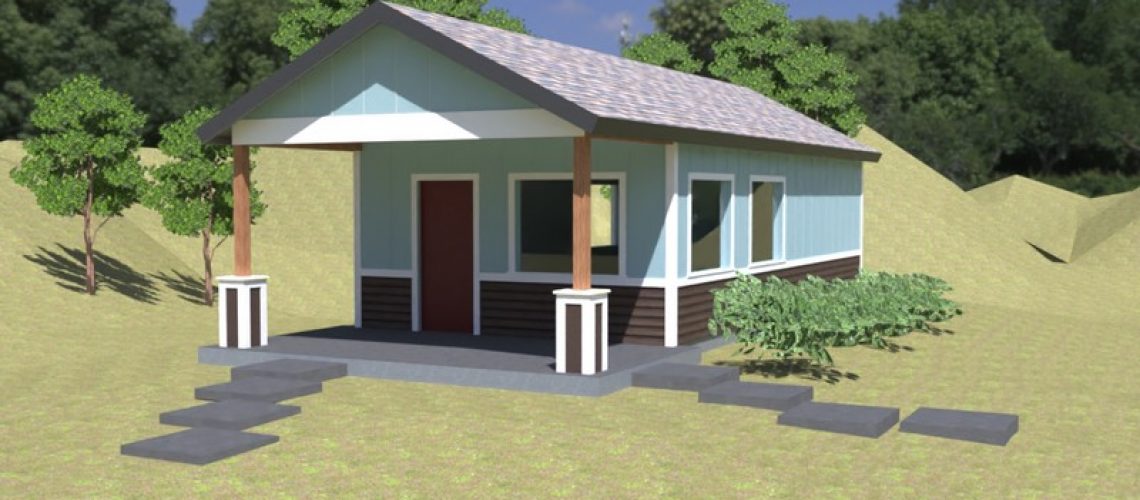This guide is intended to assist you in determining the feasibility of adding an ADU to your property and will help answer your questions of “How large of an ADU can I add?”, “Where on my property will an ADU fit?”, and many more. The intent with this guide is to be a self-service guide; however, a design professional can be consulted during this early stage as well to help you through this process. This guide poses questions to be considered and checked with your local jurisdictional requirements. You should contact your local building, planning, and environmental health departments to receive their individual requirements.
Each jurisdiction will vary in requirements and may have additional planning requirements to consider beyond this guide. It is important to review the date of your local jurisdiction’s ADU zoning requirements. Many jurisdictions have not modified their requirements to meet the State’s requirements that became effective January 1, 2020. If the local jurisdiction’s requirements are not compliant with the State requirements, then the State requirements supersede.
You can find information about your local jurisdiction by searching online for the name of your County, City, or Town and “Planning Department”.
Step 1 – Determine area allowed for ADU
Here you will want to mark out the minimum setbacks and minimum separations between the ADU and other structures on your property (minimum separations and setbacks can be determined by speaking with your local jurisdiction, rear and side setback minimums are 4’ per State law, however local jurisdictions may reduce this minimum). Once these are marked out, you can measure the allowable footprint of the ADU. This will allow you to calculate the size limitations of the ADU for the property.
Other features to mark out will include the sewer line or septic tanks and leach-field, water line (and well if applicable), utility lines, easements, driveway(s), parking areas, etc and their respective setbacks.
Items to note:
- Fire separation systems will be required if certain setbacks are not maintained. These will increase construction costs and will drive certain design features. If possible, maintaining 5’ between the ADU and property lines will help reduce costs.
- Property boundary surveys may be required when constructing close to property lines. You will need to check with your local jurisdictional requirements to determine if a survey is required.
- Completing this step will also create the foundation for the site plan, which will be required as part of the submittal package.
Step 2 – Determine jurisdictional planning requirements
What is the maximum height allowed by your jurisdiction? State law requires the maximum height to be at least 16’.
Is your lot in a flood zone? Can the floor of the ADU be located above the minimum flood elevation requirements and still meet the maximum height requirements?
Must the ADU be of similar roof lines, shapes, material finishes, etc as the primary residence? Is a ministerial permit required?
Can parking be accommodated? 1 off-street parking space may be required per ADU. Consider the path of travel from parking areas to the ADU (can your standard of privacy be maintained). What is the distance of this path of travel? Additional requirements may apply.
What is the distance to the nearest fire hydrant?
What dwellings already exist on your property? State law allows for 1 primary residence, 1 ADU, and 1 junior ADU.
Step 3 – Determine environmental factors
Will the placement of your ADU require the removal of trees? In some jurisdictions, the removal of trees may be limited per jurisdictional requirements.
If your property is on a septic system many jurisdictions will require a separate septic tank be installed for the ADU, and may allow the existing leach-field to be utilized and expanded. Is there space for the expansion of the existing leach-field? Or will a new leach-field for the ADU be required, and is there room on the property for this?
Depending on the location of the ADU in relation to property lines and other structures, additional drainage features may be required. For example, the ground is typically graded away from foundations for the first 6’. If the property line and/or other structures impede this 6’, other measures will be required.
Item to note:
- In certain circumstances, buildings may be placed over waterlines and wastewater lines. Buildings may not be placed over septic tanks or active leach-fields.
Step 4 – Determine the maximum footprint of your desired ADU
What size ADU would you prefer? This number must be equal to or less than the size determined in step 1. A few key numbers to remember:
- 1200 sqft of conditioned space is the maximum allowed by State law
- 150 sqft of conditioned space is the minimum size required
- If you are less than 750 sqft of conditioned space, no impact fees will be assessed.
- Local jurisdictions must allow up to 800 sqft to be constructed regardless of lot coverage requirements. Above 800 sqft may be subject to limitations of lot size, lot coverage, lot coverage specifically around the ADU, bedroom counts, etc.
- This 800 sqft is not defined to one type of measurement. Some jurisdictions will allow up to 800 sqft of conditioned, while others will allow up to 800 sqft of footprint, and others yet will count some covered porches, depending on configuration. The way the local jurisdiction measures this must be determined during this step if lot coverage may be an issue.
- Does your jurisdiction limit the size of covered porches, attached carports/garages, decks?
- 1 bedroom units may be limited to 850 sqft, 2 bedroom units may be limited to 1000 sqft.
Step 5 – Determine utility requirements
In step 1, you marked out existing utilities. How will these utilities be affected by the ADU? Will wastewater from the ADU be able to drain properly to the septic system or sewer line?
What is the flow of your fresh water supply? Is this sufficient to provide water to an additional unit? Or will a larger line be required? If your property is supplied by a well, does the well produce enough water flow for another unit?
What is the distance of new water line, sewer line, electrical line, gas line, etc required to be installed? What are the lead times and requirements posed by your local utility companies to make these changes?
Step 6 – Determine if grading will be required
Is the lot relatively flat? ADUs can extend 50’ or more in one direction, or as little as 10’ or less. ADU placement with the slope of the lot can help reduce grading, but may not entirely negate it. Depending on your jurisdiction, a grading permit may be required. You can roughly estimate the amount of material needed to be graded by multiplying the average depth of grading by the total footprint of the unit. If this number is close to, or exceeds the local jurisdiction requirements, a grading plan may be required.
Step 7 – Repeat Steps 4-6 (if required)
If you find the costs associated with utilities and/or grading are becoming too high, you may want to consider reducing the size or reconfiguring the shape of your ADU by repeating steps 4-6.
Step 8 – Begin the design phase of your ADU
You are finally ready to begin designing your ADU. This can take place in many forms. You may be ready to sit down with a design professional and work through various layouts, or you may want to sketch some ideas out yourself. Either way, you will now know your building limitations (height, allowable conditioned space, allowable footprint, and allowable size of covered porches and attached garages, etc.) Here at Jackson & Sands Engineering, Inc., we have a number of predeveloped ADUs that may fit all your design needs. Utilizing a pre developed design can help save you both time and thousands of dollars in design costs.



